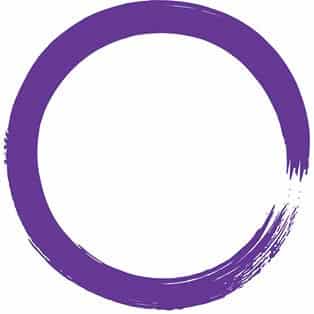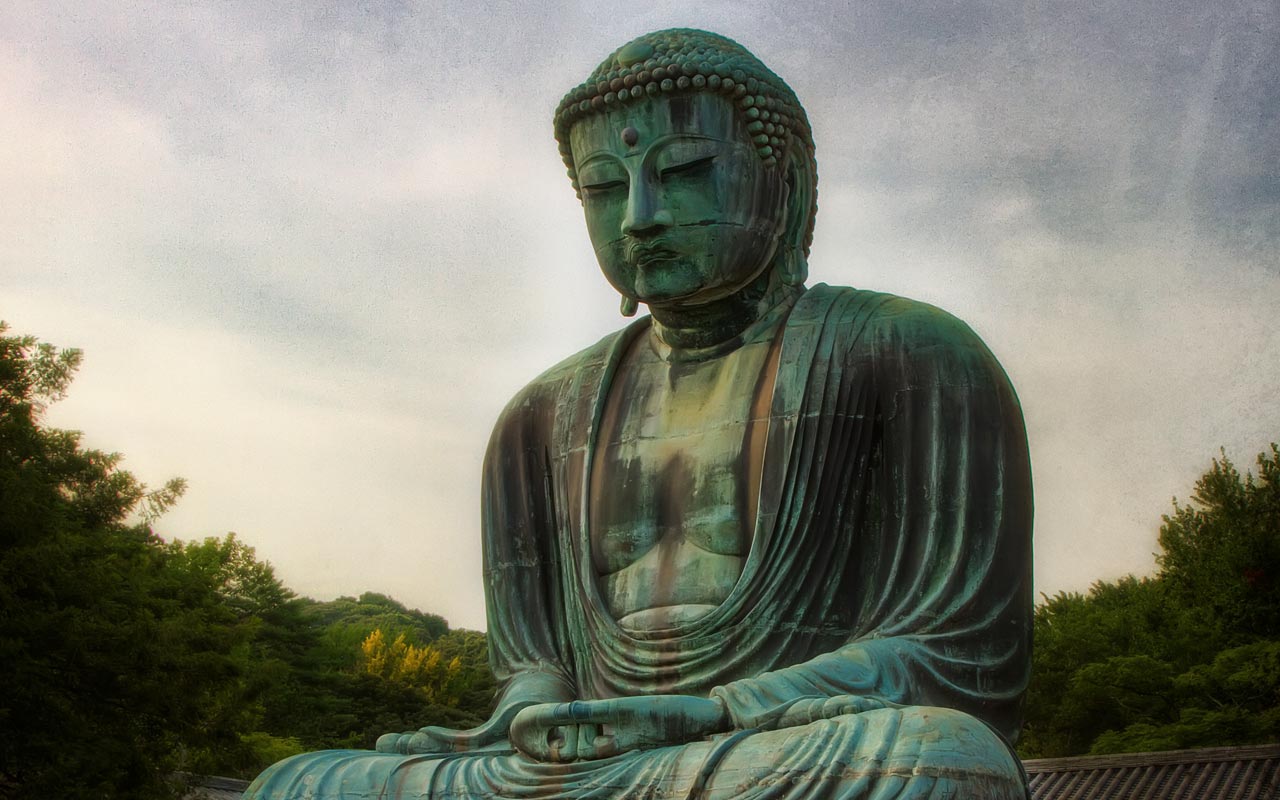Who is Buddha ?
Contrary to what most people in the Western world think, Buddha was neither a God nor a legend, but a real man that lived 2500 years ago in India.
The Buddha was born in the Lumbini woods, near the town of Kapilavastu (in modern day Nepal near the Indian border). His birth name was Siddhārtha Gautama (Shakyamuni Gotama in Japanese). Even though he lived for about eighty years, the dates of his birth and death are not established with certainty. Most Historians say he was born in 563 BC and died in 486 BC.
Gautama’s father, Suddhodana Gautama, was the leader of the warrior class of Kapilavastu. Gautama’s mother, Queen Māyā (Māyādevī) died shortly after his birth, and he was raised in luxury by his father and his father’s new wife.
Gautama showed an early taste for meditation, reflection, and self-growth. By his father’s wishes, he married young and took part in the public life of the king’s court. He had a son whom he named Rahula.
Gautama began his quest for Enlightenment at the age of twenty-nine when he managed to go outside the palace walls. Throughout Gautama’s entire life before this, his father had constantly kept him inside the palace walls to protect him from suffering and the reality of the world.
On his first visit outside the palace, he came across an entirely new reality, a world that he never knew existed. He saw the suffering of a newborn baby, a sick man, an old man, and a rotting corpse. He suddenly realized that suffering is common to all of humanity.
After making the acquaintance of a mendicant monk, he calmly and peacefully decided to abandon his family, wealth, and power to achieve Enlightenment. Buddhists call this decision “The Great Renunciation”, and they consider it a turning point in history.
One night, having made his decision, Gautama left the gigantic palace, abandoning his wife and child to travel the world in search of Enlightenment. He traveled as a beggar in northern India and followed the teachings of many gurus, but he soon found himself dissatisfied.
He continued his quest for Truth as he finally settled in the town of Uruvela, near Gaya, with five men as his disciples who all shared his same goal. Together, they sought to achieve Enlightenment through an incredibly severe practice that involved total deprivation of worldly goods, meditating 10 hours a day, eating only a few grains of rice a day, never talking, and sleeping very little.
One day, after becoming so starved and so weakened from his ascetic practice, he finally collapsed. He was helped by a village girl named Sujata who fed him milk and rice pudding to restore his health. This event made him realize that the extreme lifestyle he was living was very unbalanced and would not bring him Enlightenment.
(…) he developed a practice and way of life that he called “The Middle Way,” a path of moderation away from the extremes in every aspect of life.
He gradually recovered his health by stopping his extreme practice, though he lost his five disciples who accused him of being a “quitter”. Those six years of self-mortification made him understand that extreme asceticism doesn’t work and that in all things, balance is necessary.
In response to his experience, he developed a practice and way of life that he called “The Middle Way“, a path of moderation away from the extremes in every aspect of life.
The Founder of Buddhism
One evening, at the age of thirty-five, he sat in dhyana (a Sanskrit term with the same meaning as Zazen in Japanese, and Chan in Chinese) at the feet of a pipal tree, a tree later known as “The Bodhi Tree”, in Bodh Gaya, India.
It was here that he became determined not to stop meditating before reaching Enlightenment (satori in Japanese), awakening to the reality of the Universe.
After 49 days of meditation, at the age of 35, he is said to have attained Enlightenment. It was at this moment that he became “The Buddha” – The Awakened One.
At the moment of his Enlightenment, he experienced a sublime intuitive understanding of existence, and he understood the cause of earthly suffering, as well as how it could be eradicated. His observations about suffering became known as the Four Noble Truths. He also developed the Noble Eightfold Path, one of his principal teachings, which is described as the path leading to the cessation of suffering. Both the Four Noble Truths and the Noble Eightfold Path are at the center of Buddhism, as well as Zen.
Having decided to preach his teaching or Dharma, the Buddha returned to his former disciples in Benares. Amazed by his wisdom, sincerity, and knowledge, they took him again as their teacher, and he was ordained as a monk. Together with him, they formed the first group of Buddhist monks, called a Sangha in Sanskrit.
Shortly after forming the first sangha, he preached his first sermon in the “Deer Park” near Benares. This sermon contained the essence of Buddhism, in which he elaborated on his doctrine of The Middle Way. Accompanied by his disciples, the Buddha traveled in the valleys of the Ganges spreading his philosophy, making disciples, and creating a group of monks where everyone was admitted without any discrimination. Later on, he returned to his hometown and preached to his father, his wife, and other family members.
A wealthy admirer paid for the construction of a monastery in Savatthi, which became the Buddha’s main residence and teaching center. The Buddha’s teachings spread, and more monasteries were built in major cities along the Ganges. Even as it gained prominence, his dharma remained a way of life, a philosophy than a religion.
After a life devoted to spiritual activity, the Buddha died in Kusinagar (in modern day Nepal) at around eighty years of age. Foreseeing his death, he warned his followers about it, but he refused to give them any specific instructions on the continuation of his teaching. Instead, he insisted that he had already taught all that was necessary. His body was cremated, and his ashes were divided and put into the eight Buddhist temples spread across India.

